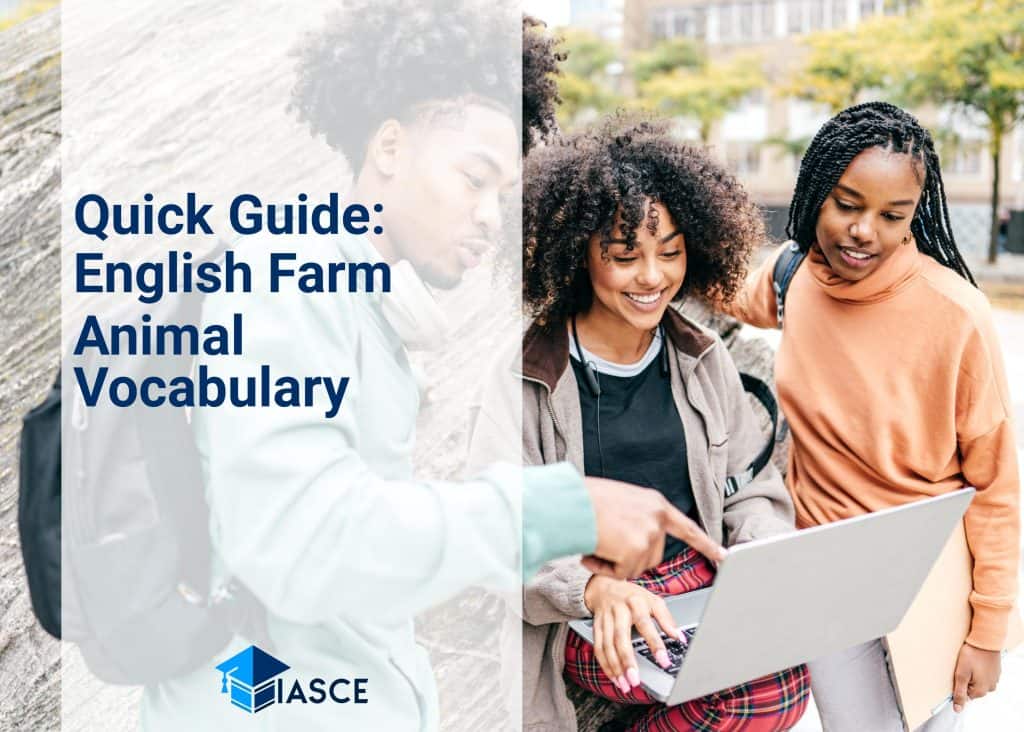Mastering farm animal vocabulary in English isn’t just about memorizing names. It’s an opportunity to delve into a rich linguistic landscape, discover nuances of grammar, and unlock facets of rural culture often masked by city living.
When we talk about farm animals, we’re not just discussing cows, pigs, and chickens. We’re exploring the ways these creatures are woven into our language and traditions. From idiomatic expressions like “don’t put all your eggs in one basket” to compound words with animal roots like “piggyback”, mastering this vocabulary can deepen your understanding of English.
So let’s pull on our metaphorical rain boots and head out on a linguistic journey through the pastures of English farm animal vocabulary. I’m here to guide you every step of the way as we muck out stables filled with fascinating language tips and tricks!
Understanding the Vocabulary of Farm Animals
I’ll start by saying, understanding the vocabulary of farm animals isn’t just for farmers or animal enthusiasts. It’s an essential part of mastering English language and grammar. You might be surprised to discover how often these terms crop up in everyday conversations, idiomatic expressions, and even literature!
Let’s talk about some common farm animals first. There are cows, known for providing us with milk and beef. Then there are sheep that give us wool, and pigs from which we get pork.
Farm poultry includes chickens, whose eggs we eat almost daily; ducks, known for their waterproof feathers; and turkeys that take centre stage during Thanksgiving meals.
But it’s not enough just to know the names of these animals. To truly understand this vocabulary, you need to familiarize yourself with their associated terminology too.
For instance, a young cow is called a ‘calf’, while a baby sheep is termed as a ‘lamb’. A piglet refers to a young pig. Furthermore, male chickens are ‘roosters’ or ‘cocks’, females are ‘hens’, and their offspring are ‘chicks’.
Using correct terms when referring to farm animals can greatly enhance your expression clarity in English. But remember: practice makes perfect! So next time you come across any references to farm animals in your reading or conversation, make sure you’re using – and understanding – the right terminology.
Grammar Tips for Discussing Farm Animals
I’ve got some handy advice to share as we dive into the world of farm animal vocabulary. English, being a rich and diverse language, has plenty of nuances when it comes to discussing barnyard critters.
First up, let’s talk about collective nouns. These are used to signify a group of animals. For instance, a team of oxen or a flock of sheep. Each species tends to have its own unique term for groups, so it’s worth getting familiar with these.
| Collective Noun | Animal |
|---|---|
| Flock | Sheep |
| Herd | Cows |
| Team | Oxen |
Next on our list is gender-specific terminology. It might come as news that many farm animals have different names depending on whether they’re male or female. An adult male chicken is called a rooster while an adult female is known as a hen.
Switching gears slightly, I’d like to discuss verb usage in relation to farm animals. Certain verbs are inherently associated with specific animals due to the sounds they make or actions they perform. Pigs oink and snort, cows moo and graze, chickens cluck and peck – these words add richness and specificity when talking about farm life.
Lastly but importantly – don’t forget about articles! When referring generally to an animal type you’d use “a” or “an”, but if speaking about one in particular you’d switch this out for “the”. So it’s ‘a horse’ when chatting generally but ‘the horse’ if pointing out Old Bessie in the field!
In summary:
- Learn collective nouns for groups.
- Know your gender-specific terms.
- Use animal-associated verbs where possible.
- Be mindful of your use of articles.
Mastering these guidelines will significantly enhance your conversational skills around farm animal vocabulary!
Conclusion: Mastering English Through Animal Vocabulary
Mastering a language isn’t just about cramming grammar rules. It’s more about immersing one’s self in the culture, context, and everyday expressions of that language. This is where learning animal vocabulary in English comes into play.
By exploring this aspect of the English language, I’ve not only expanded my vocabulary but also gained a better understanding of various idiomatic expressions and cultural references. For instance, knowing that ‘chicken’ can refer to both an animal and a person who is scared has helped me comprehend certain conversations and text better.
Here are some key points to remember:
- Animal vocabularies aren’t just names of animals. They extend to idioms, metaphors, proverbs and other figures of speech.
- Context matters! The same word can have different meanings depending on how it’s used.
- Practice makes perfect. Use these words as much as you can in your daily communication.
I can assure you that this method won’t let you down. Not only will it improve your vocabulary, but it’ll also make you sound more like a native speaker – an important goal for many English learners!
As we conclude this journey through mastering English via animal vocabulary, I hope these tips provide a unique lens through which you can view the intricate tapestry that is the English language.
Remember; every new word learned is one step closer to fluency! Keep exploring, keep learning!

